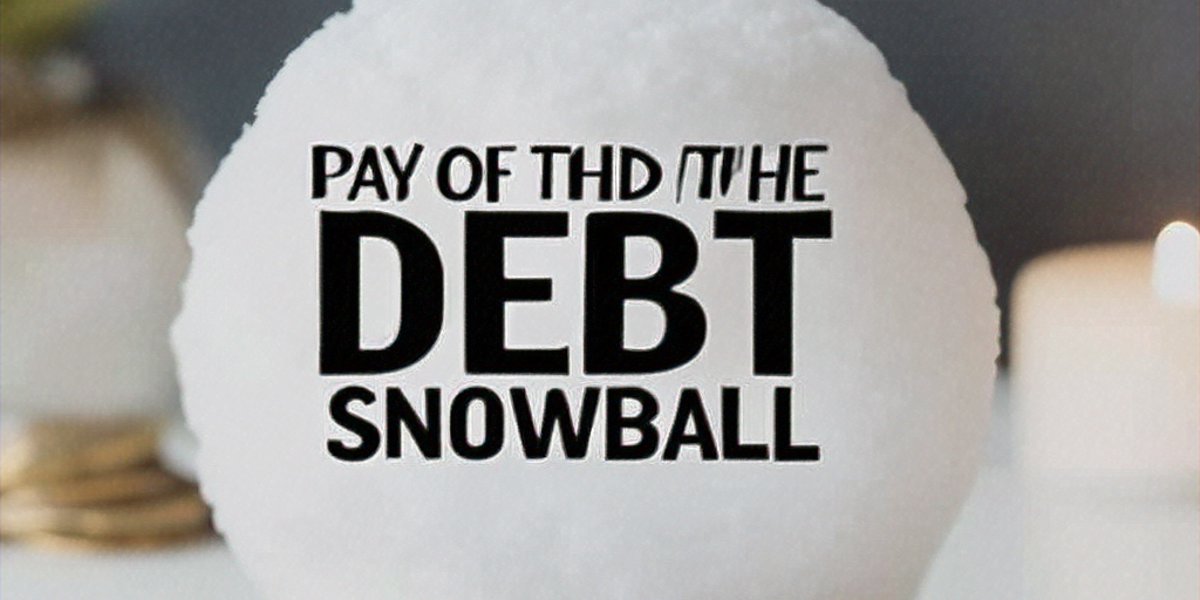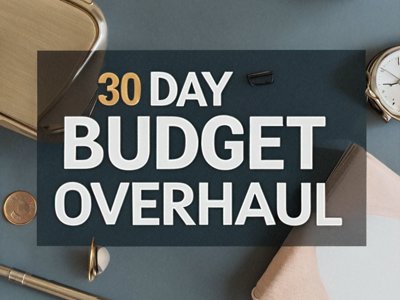Pay Off Debt with the Debt Snowball
Mathematically, avalanche wins. Behaviorally, snowball wins more often. The debt snowball method focuses on psychology and momentum rather than pure mathematics, helping you eliminate debt faster by staying motivated throughout the process. Learn how to use this powerful method to become debt-free.
Understanding the Debt Snowball Method
What Is the Debt Snowball?
The debt snowball is a debt payoff strategy where you pay off your debts in order from smallest balance to largest balance, regardless of interest rates. As each debt is eliminated, you roll the payment into the next debt, creating a "snowball" effect.
How It Works
- List all your debts from smallest balance to largest
- Make minimum payments on all debts
- Put every extra dollar toward the smallest debt
- When the smallest debt is paid off, roll that payment into the next smallest debt
- Repeat until all debts are eliminated
The Psychology Behind the Snowball
The debt snowball works because it provides quick wins and visible progress. Paying off smaller debts first gives you immediate victories that build momentum and motivation to continue the process.
Why the Snowball Method Works
Quick Wins Build Momentum
Smaller debts get paid off faster, providing quick wins that keep you motivated. Each paid-off debt is a victory that reinforces your commitment to becoming debt-free.
Simplified Decision Making
With only one debt to focus on at a time, you eliminate decision fatigue. You don't have to choose which debt to pay extra on—the answer is always the smallest one.
Visual Progress Tracking
The snowball method makes progress visible and tangible. You can see debts disappearing from your list, which provides psychological reinforcement.
Behavioral Science Support
Research shows that people are more likely to stick with behaviors that provide immediate rewards. The debt snowball leverages this principle by delivering quick wins.
Setting Up Your Debt Snowball
Step 1: List All Your Debts
Create a comprehensive list of all your debts, including:
- Credit cards
- Personal loans
- Student loans
- Car loans
- Medical bills
- Any other outstanding balances
Information to include:
- Creditor name
- Current balance
- Minimum payment
- Interest rate
- Due date
Step 2: Order by Balance
Sort your debts from smallest balance to largest balance. This is the order you'll pay them off, regardless of interest rates.
Example debt list:
- Medical bill: $500
- Credit card: $1,200
- Personal loan: $3,000
- Car loan: $8,000
- Student loan: $15,000
Step 3: Calculate Your Snowball Payment
Determine how much extra money you can put toward debt payoff each month. This could come from:
- Cutting expenses
- Increasing income
- Selling items
- Using windfalls (tax refunds, bonuses, etc.)
Step 4: Create Your Payment Schedule
Set up your payment schedule showing how the snowball payment grows as each debt is eliminated.
Implementing the Debt Snowball
Month 1: Start with the Smallest Debt
- Pay minimum on all debts
- Put your extra $500 toward the $500 medical bill
- Medical bill is now paid off!
Month 2: Roll the Payment Forward
- Pay minimum on remaining debts
- Put $500 (your extra money) + $25 (old medical bill minimum) = $525 toward the $1,200 credit card
- Credit card balance is now $675
Month 3: Continue the Snowball
- Pay minimum on remaining debts
- Put $525 toward the credit card
- Credit card balance is now $150
Month 4: First Credit Card Paid Off
- Credit card is now paid off!
- Put $525 + $35 (credit card minimum) = $560 toward the $3,000 personal loan
Advanced Snowball Strategies
The Mini-Snowball
If you have very large debts, create mini-snowballs by breaking them into smaller chunks. For example, treat a $15,000 student loan as multiple $1,000 chunks.
The Hybrid Approach
Combine the snowball method with interest rate considerations for very high-interest debt. Pay off any debt with interest rates above 20% first, then use the snowball method for the rest.
The Side Hustle Snowball
Use income from side hustles exclusively for debt payoff. This creates a dedicated debt elimination fund that doesn't impact your regular budget.
The Windfall Snowball
Apply unexpected money (tax refunds, bonuses, gifts) directly to your current snowball debt. This can accelerate your progress significantly.
Staying Motivated Throughout the Process
Create a Visual Progress Tracker
Make your debt payoff progress visible:
- Create a debt payoff chart on your fridge
- Use a debt payoff app
- Create a visual representation of your debts
- Track progress in a spreadsheet
Celebrate Each Victory
Acknowledge and celebrate each debt you pay off:
- Have a small celebration
- Update your progress tracker
- Share your success with supportive friends
- Reward yourself with something small and meaningful
Focus on the End Goal
Keep your ultimate goal in mind:
- Calculate how much you'll save in interest
- Imagine the freedom of being debt-free
- Plan what you'll do with the money once debts are gone
- Create a vision board of your debt-free future
Build a Support System
Surround yourself with people who support your debt-free journey:
- Find a debt-free community online
- Share your goals with supportive friends and family
- Consider working with a financial coach
- Join debt payoff challenges
Common Challenges and Solutions
Irregular Income
If your income varies month to month:
- Base your snowball payment on your lowest expected income
- Use extra income for additional debt payoff
- Build a small emergency fund before starting aggressive debt payoff
- Adjust your snowball payment based on actual income
Unexpected Expenses
When unexpected expenses arise:
- Have a small emergency fund (1-2 months of expenses)
- Pause the snowball temporarily if necessary
- Look for ways to reduce the unexpected expense
- Resume the snowball as soon as possible
Temptation to Stop
When you're tempted to give up:
- Remember why you started
- Look at your progress so far
- Calculate how much you've already paid off
- Focus on the next small victory
Family Resistance
When family members resist the debt payoff plan:
- Explain the benefits of being debt-free
- Include family members in the planning process
- Show them the progress you're making
- Be patient and consistent
Measuring Your Progress
Key Metrics to Track
- Total debt balance
- Number of debts remaining
- Monthly snowball payment amount
- Total interest saved
- Projected debt-free date
Weekly Check-ins
- Did I make my snowball payment?
- How much progress did I make this week?
- What unexpected expenses came up?
- How can I increase my snowball payment next week?
Monthly Reviews
- How much debt did I pay off this month?
- Am I on track for my debt-free date?
- What worked well this month?
- What do I need to adjust for next month?
Beyond the Debt Snowball
What to Do After Becoming Debt-Free
Once you're debt-free:
- Build a larger emergency fund (3-6 months)
- Start investing for long-term goals
- Save for major purchases
- Help others become debt-free
Maintaining Debt-Free Status
To stay debt-free:
- Continue living below your means
- Save for major purchases instead of financing
- Use credit cards responsibly (if at all)
- Regularly review your financial situation
Building Wealth
After debt payoff, focus on:
- Increasing your savings rate
- Investing for retirement
- Building passive income streams
- Creating multiple income sources
Success Stories and Examples
Real Debt Snowball Examples
Example 1: Sarah paid off $25,000 in debt in 18 months using the snowball method, starting with a $500 medical bill.
Example 2: Mike eliminated $40,000 in debt in 24 months, using side hustle income to accelerate his snowball payments.
Example 3: The Johnson family paid off $60,000 in debt in 36 months, using the snowball method combined with aggressive expense cutting.
What Made Them Successful
- Consistent monthly payments
- Focus on one debt at a time
- Celebration of small victories
- Support from family and friends
- Clear goals and progress tracking
Tools and Resources
Debt Payoff Apps
- Undebt.it
- Debt Payoff Planner
- YNAB (You Need a Budget)
- Personal Capital
Spreadsheet Templates
- Debt snowball calculator
- Progress tracker
- Payment schedule
- Interest savings calculator
Books and Resources
- "The Total Money Makeover" by Dave Ramsey
- "Debt-Free Living" by Larry Burkett
- Online debt payoff communities
- Financial coaching services
The wins stack. In 6–18 months, your cash flow will feel new. The debt snowball method is powerful because it works with human psychology rather than against it. By focusing on quick wins and visible progress, you'll stay motivated throughout your debt-free journey. Remember, the goal isn't just to pay off debt—it's to build the habits and mindset that will keep you debt-free for life. Start with your smallest debt, celebrate each victory, and watch your financial freedom grow with each payment.


